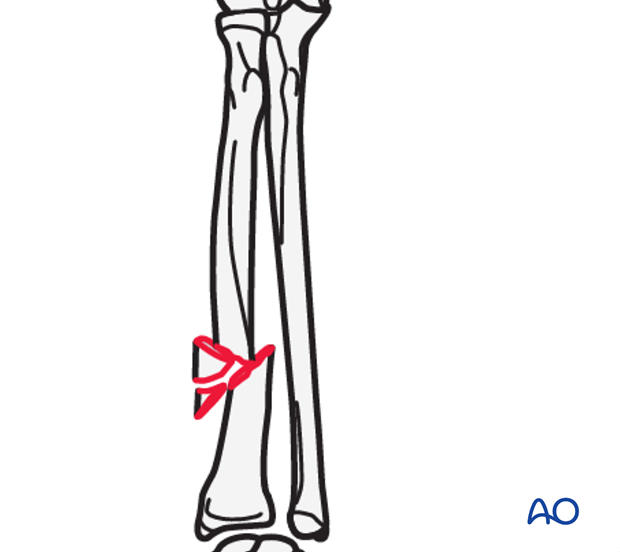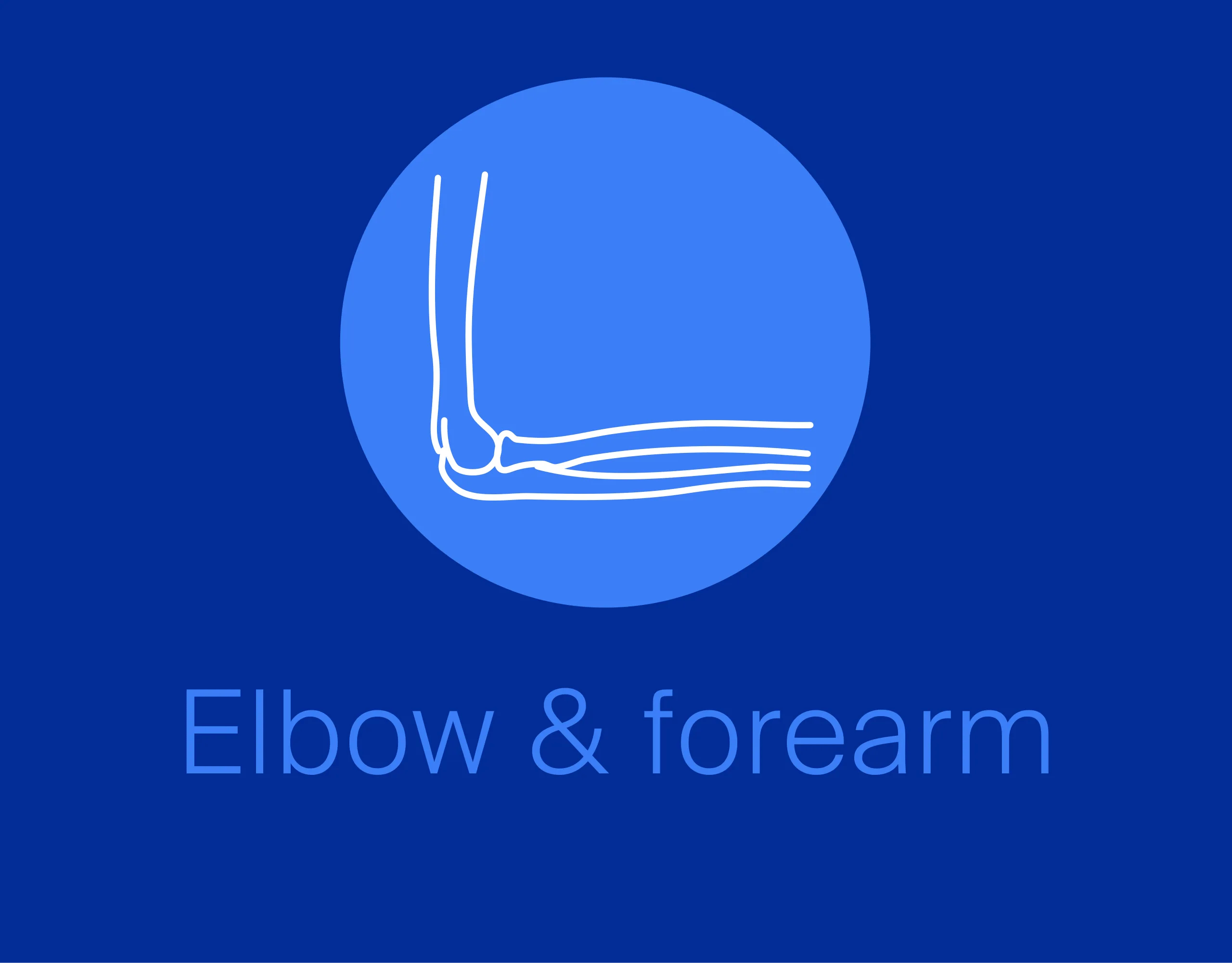Wedge fracture of the radius, with dislocation of distal radioulnar joint (Galeazzi)
In a Galeazzi fracture-dislocation the displaced radial shaft fracture is associated with a dislocation of the ulnar head at the distal radioulnar joint (DRUJ).
These are classified by AO/OTA, according to the morphology of the radial fracture, with qualifier (g). For example, the illustration shows a 2R2B3(g).
Forearm fractures are often the result of indirect mechanisms, such as a fall onto an outstretched hand, sporting activities, etc.
Often these radial fractures are located where the cross-section of the radius is circular. At this level of the radius the main stress is torsional, because the bending loads are carried by the ulna.














